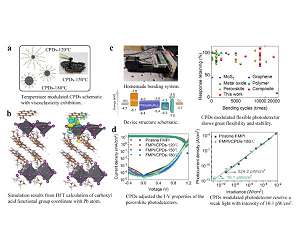As part of the University’s climate commitment, Nanyang Technological University, Singapore (NTU Singapore) is investing S$5.7 million to ramp up solar energy production.
This initiative will see over 13,000 new solar photovoltaic (PV) panels installed on the NTU Smart Campus, in addition to the University’s existing 19,000 solar panels installed in 2015. These solar PV panels absorb sunlight and convert it into electricity to power NTU’s building and facilities.
When completed by the last quarter of 2023, the solar energy generated by the campus-wide solar PV system will increase by 74 per cent compared to the current output.
The University’s total solar energy deployment will rise to 9.82 megawatt-peak (MWp). This means that the University will be able to churn out 11.8 million kilowatt-hour (kWh) of clean energy annually – enough to power over 5,300 two-room HDB flats for a year.
As all buildings and facilities on the NTU campus are currently partially powered by solar-generated electricity, the expansion of solar energy into its energy supply mix could help the University reduce 4,800 tonnes of carbon emissions a year.
The initiative is part of NTU’s commitment to sustainability as outlined in the University’s five-year strategic plan NTU2025 and its smart campus vision, where advanced tech-enabled solutions are used for better learning and living experiences, the discovery of new knowledge, and the sustainability of resources.
It is funded by the proceeds from the issuance of the NTU sustainability-linked bond launched in Oct 2021, which supports the University’s wide-ranging corporate and sustainability goals and activities aligned with its Sustainability Manifesto. Under this 15-year sustainability plan, NTU will strive to achieve carbon neutrality, along with a 50 per cent reduction in carbon emissions, by 2035.
It is also in line with the Government’s target to increase solar energy deployment here by five times by 2030 under the Singapore Green Plan.
NTU Senior Vice President (Administration) Ms Tan Aik Na said: “An existential challenge like climate calls for us, as a university, to not just take leadership in paradigm-shifting research for sustainable and innovative solutions, but to also take proactive actions in every aspect of our lives. At NTU, our efforts begin on our campus. This investment is an integral part of our sustainability effort to achieve carbon neutrality by 2035. Together with many other green initiatives and sustainability related research, the NTU community is committed to doing our part for the environment.”
Professor Madhavi Srinivasan, Executive Director, NTU Sustainability Office, said: “Buildings are responsible for nearly 40 per cent of the world’s carbon emissions. With such high emissions footprint, using design and technology to enable buildings to produce enough energy to run itself can help mitigate climate change in a meaningful way. Using electricity generated from our campus-wide solar PV panels is just one of the various initiatives that reflect NTU’s commitment to decarbonisation and sustainable development.”
Last year, NTU launched the NTU Sustainability Manifesto, a 15-year plan to propel the University’s wide-ranging sustainability efforts and solidify NTU’s position as a global leader in sustainability.
As part of this plan, NTU switched to electric buses for its campus shuttle services beginning in September to offer the NTU community a greener way to travel.
NTU is also home to eight Zero-Energy buildings[1] that deploy various energy-saving strategies aside from harvesting solar energy. For instance, at The Wave, walls of the wooden sports hall are embedded with coils that have chilled water flowing through them. This cools the wind that enters the hall allowing warmer air to escape through convection, reducing the need for any air-conditioner or ceiling fan.
Other Zero-Energy buildings include Nanyang Auditorium and the Singapore Hokkien Huay Kuan building that houses the School of Humanities and School of Social Sciences.
Related Links
Nanyang Technological University
All About Solar Energy at SolarDaily.com
|
We need your help. The SpaceDaily news network continues to grow but revenues have never been harder to maintain. With the rise of Ad Blockers, and Facebook – our traditional revenue sources via quality network advertising continues to decline. And unlike so many other news sites, we don’t have a paywall – with those annoying usernames and passwords. Our news coverage takes time and effort to publish 365 days a year. If you find our news sites informative and useful then please consider becoming a regular supporter or for now make a one off contribution. |
||
|
SpaceDaily Contributor $5 Billed Once credit card or paypal |
SpaceDaily Monthly Supporter $5 Billed Monthly paypal only |
|

![]()
Carbonized polymer dots enhanced stability and flexibility of quasi-2D perovskite photodetector
Changchun, China (SPX) Oct 27, 2022
High-performance photodetectors with great detection capability have been widely deployed in our daily life, such as driverless technology, intraoperative navigated surgery, face recognition, anti-counterfeiting, and so on. However, we still face challenges as new demands are required for additional functions like excellent flexibility with no sensitivity/stability loss. Therefore, novel photosensitive materials or multi-functional composites are needed to meet the fast technology development.
In … read more
